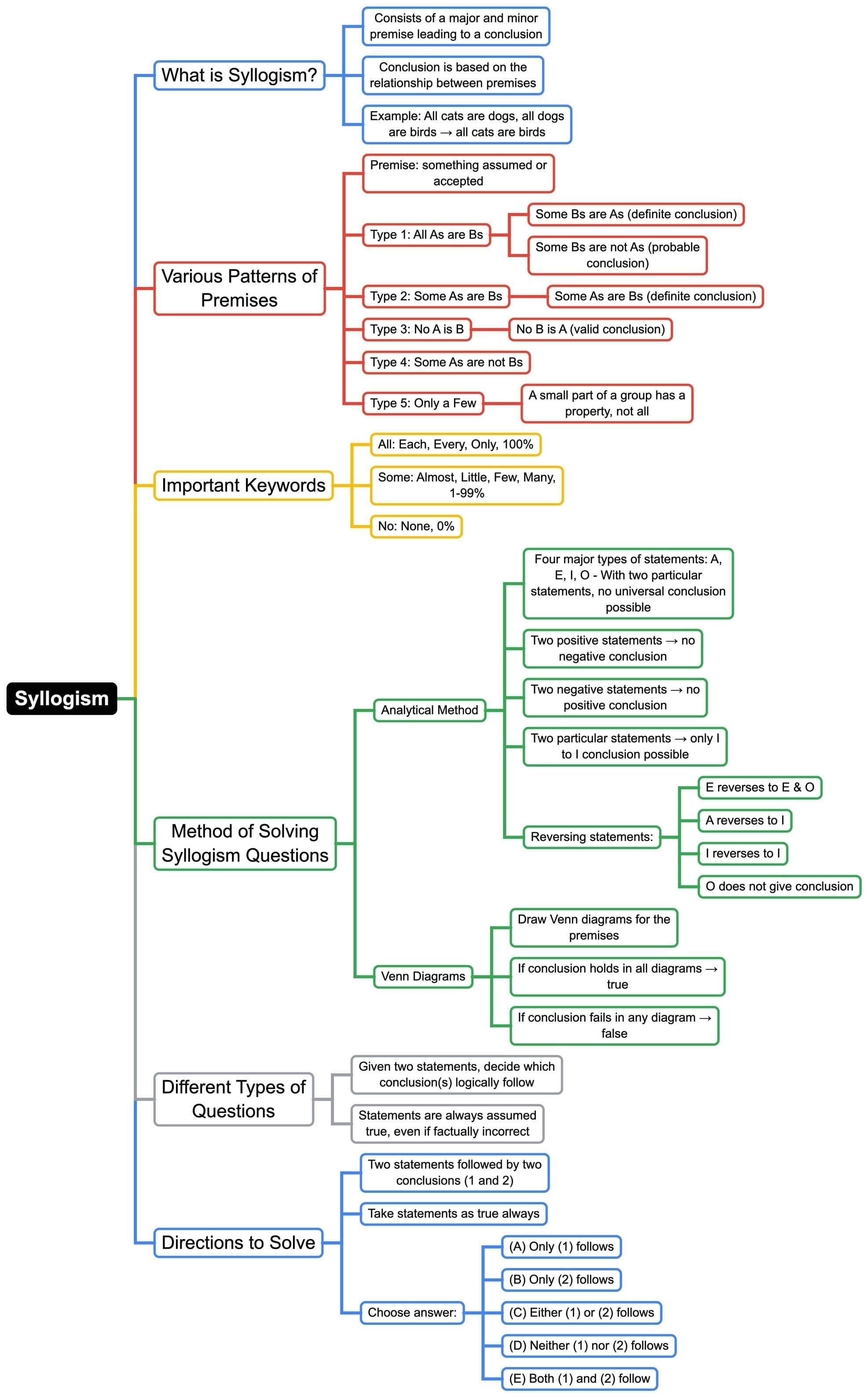CAT Exam > CAT Notes > Verbal Ability & Reading Comprehension (VARC) > Mind Map: Syllogism
Mind Map: Syllogism | Verbal Ability & Reading Comprehension (VARC) - CAT PDF Download

The document Mind Map: Syllogism | Verbal Ability & Reading Comprehension (VARC) - CAT is a part of the CAT Course Verbal Ability & Reading Comprehension (VARC).
All you need of CAT at this link: CAT
|
111 videos|450 docs|90 tests
|
FAQs on Mind Map: Syllogism - Verbal Ability & Reading Comprehension (VARC) - CAT
| 1. What is a syllogism and how does it work in logical reasoning? |  |
Ans. A syllogism is a form of deductive reasoning consisting of two premises and a conclusion. It typically follows a structure where if the premises are true, the conclusion must also be true. For example, if "All humans are mortal" (premise 1) and "Socrates is a human" (premise 2), then the conclusion is "Socrates is mortal." This logical structure is essential for understanding arguments in various contexts.
| 2. What are the different types of syllogisms commonly used in logical reasoning? |  |
Ans. There are several types of syllogisms, including categorical syllogisms, hypothetical syllogisms, and disjunctive syllogisms. Categorical syllogisms involve statements about categories (e.g., "All A are B"). Hypothetical syllogisms involve conditional statements (e.g., "If A, then B"). Disjunctive syllogisms present alternatives (e.g., "Either A or B"). Each type serves different purposes and can be used to analyze arguments effectively.
| 3. How can syllogisms be applied in the context of the CAT exam? |  |
Ans. In the CAT exam, syllogisms are often tested in the logical reasoning section. Candidates may encounter questions that require them to deduce conclusions from given premises or identify valid arguments. Practicing syllogisms helps enhance critical thinking skills and improves one's ability to analyze arguments, which is crucial for success in the exam.
| 4. What are common mistakes to avoid when solving syllogism questions? |  |
Ans. Common mistakes include misinterpreting the premises, overlooking the logical relationships between the statements, and making assumptions that are not supported by the provided information. It's essential to carefully analyze each premise and ensure that the conclusion directly follows from them without adding any outside information.
| 5. How can one improve their ability to solve syllogism problems effectively? |  |
Ans. To improve in solving syllogism problems, one can practice regularly with a variety of questions, study the rules of logical reasoning, and understand the different types of syllogistic structures. Participating in mock tests and reviewing explanations for both correct and incorrect answers can also enhance understanding and boost confidence in tackling syllogism-related questions.
Related Searches















